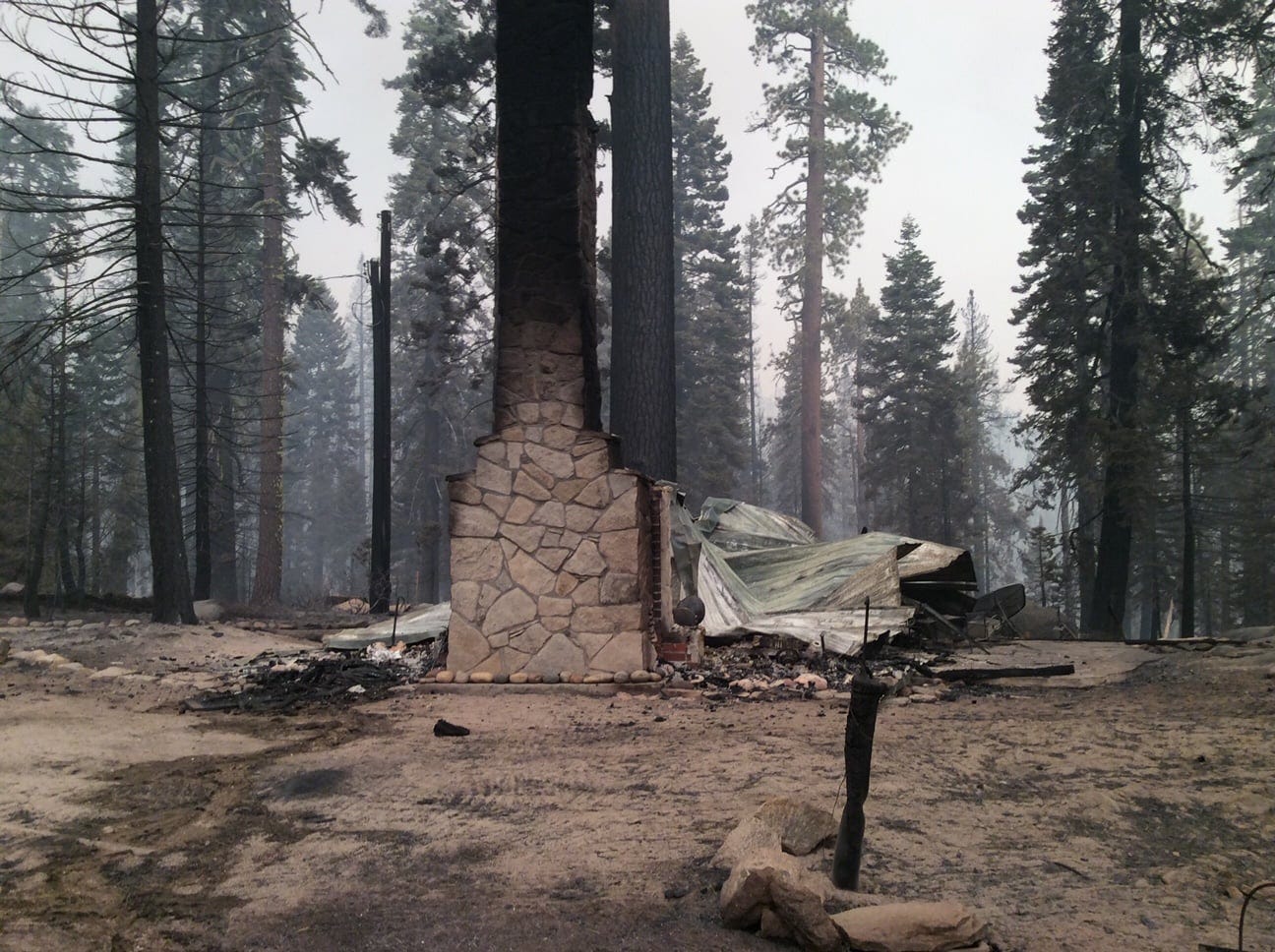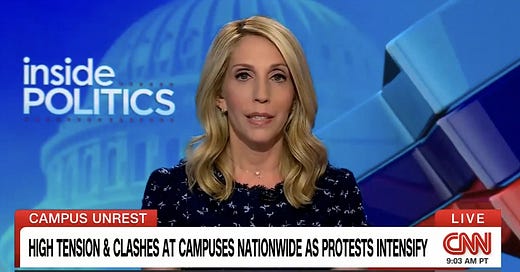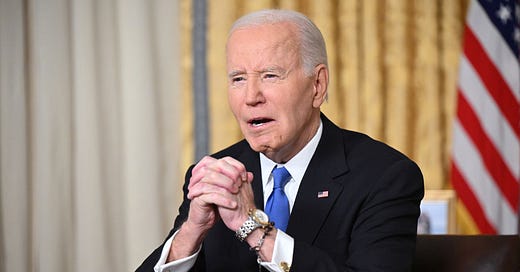

A few years ago, I started to get the feeling that it was only a matter of time. Every year, in the late summer and fall, when California’s skies turned orange and enough smoke drifted toward the major cities that the relatively safe and comfortable people there got spooked, I’d field a handful of questions from friends who knew I was from a more rural, more flammable part of the state: “Oh yeah, how are your parents with all that? Is any of it near them?”
I usually had an easy answer. They’re fine, I’d say. The fires are mostly on the other side of the mountains — the Yosemite Valley and the northern Sierras get it bad sometimes, but their pocket mostly just gets a lot of smoke. A few years ago, my mom developed some pretty serious lung damage from inhaling smoke for months on end, but doctors said she’d be all right as long as they check her for cancer every now and then.
It was always technically possible that one of the fires would pose a problem. That risk was always in the back of our minds. But for most of the mountain community outside of Fresno that I grew up in, a major fire was improbable — something to worry about now and then, but that would probably never happen to us.
What we know now is that the flames are going to come for all of us eventually. This weekend was just our turn.
It’s hard to describe the area I grew up in. It is, for the most part, one contiguous community, spread over more than half a dozen towns nestled in different valleys and draws in the foothills and lower reaches of the Sierra Nevada mountains. For over a century, most of these towns have fed into Sierra High School. The high school occupies a sprawling campus tucked just at the bottom of what we call “the 4-Lanes,” a wide section of California Highway 168 that shoots 3,000 feet up into the alpine layer of the Sierras, where it reverts back to a two-lane highway just before Cressman’s General Store. Above Cressman’s are two lakes, Shaver and Huntington. Shaver has a year-round population clustered in a small village and a few sprawling subdivisions made up of back roads. Huntington is surrounded by mostly seasonal cabins — my parents own one of them — and a ski resort, China Peak. In the summer, these lakes are the center of the community, as a large part of the local economy depends on “flatlanders” from the Central Valley renting marina space, condos, and cabins. In the winter, the ski resort is the main draw. For locals, all of this is home. The lakes and slopes are a part of life; half of my friends worked seasonal jobs at either the marina, pizza place, or resort. I kissed one of my first crushes in a friend’s cabin near Shaver, and got drunk in the summer at keg parties thrown so deep in the mountains that they got broken up by the Forest Service.
The Creek Fire started at some point on Friday in a valley below the town of Big Creek, which is largely inhabited by Southern California Edison workers who maintain the massive hydroelectric power plant located there. On Friday night, a crowd of residents gathered at the overlook point, watching the fire spread through the valley below. On Saturday, my dad emailed me: “Fire at Camp Sierra,” referring to the kids and family summer camp a few miles downhill. At that point, it was 5,000 acres and spreading. “Still significantly downhill from the west end of Huntington,” he wrote. “Mum and I came down yesterday afternoon [from the cabin], and are home and safe. We ain't going anywhere.”
By Saturday evening, the Creek Fire had burned 45,000 acres. By Sunday evening our cabin at Huntington was gone, as was half of Big Creek. Evacuees started filling up Foothill Elementary School. By Monday, the winds had shifted, and the fire was burning downhill, threatening homes in several more towns along the way. Cressman’s, the decades-old gas station that marks the top of the 4-Lanes, was now smoking rubble. My parents still weren’t going anywhere, but they’d packed both cars and moved family heirlooms like paintings and rugs to a friends’ vacant house in Fresno on the valley floor.
The cabin was their retirement plan. They were going to spend the summers there fixing various quirks like the shower handle that delivered a mild electric shock when you changed the water temperature, and sailing on the lake in a tiny two-person Lido sailboat similar to the ones my mother learned to sail on at the same lake, 55 years before. This summer, they’ve been mostly spending weekdays there, to avoid the weekend crowds of boaters who seem largely unconcerned with social distancing guidelines.
But even with that loss, they’re incredibly lucky. It looks like my parent’s main house will probably survive. The winds have been more forgiving today, and the fuel load in their area of the foothills is much lower than it is above the timber line. Many others were not so lucky. My Facebook feed, over the past few days, has felt like a solid wall of friends with lost houses, lost pets, lost retirement plans or jobs or businesses.
What this leaves me with is a horrible feeling of futility. This is happening to so many people in so many places: There are currently at least 85 major wildfires burning in the country, across California, Oregon, Washington, Colorado, and other states. The causes of California’s wildfires are varied, and their enormous destructive power is kind of complicated to understand. The long and short of it is that there is far too much to burn, and far too little of it that actually burns. Perversely, the solution to California’s wildfires is more flames, not less — but keeping them from inflicting pain and undue destruction is a far more difficult task. From a ProPublica story last month:
Academics believe that between 4.4 million and 11.8 million acres burned each year in prehistoric California. Between 1982 and 1998, California’s agency land managers burned, on average, about 30,000 acres a year. Between 1999 and 2017, that number dropped to an annual 13,000 acres. The state passed a few new laws in 2018 designed to facilitate more intentional burning. But few are optimistic this, alone, will lead to significant change. We live with a deathly backlog. In February 2020, Nature Sustainability published this terrifying conclusion: California would need to burn 20 million acres — an area about the size of Maine — to restabilize in terms of fire.
Making this fix would be complicated, of course, because it would require disrupting the big-business economy that fuels these fires. The corporate-conservative line taken by people like Donald Trump is to blame the fires on “poor forest management,” which is largely code for environmental restrictions on logging companies that prevent them from clear-cutting swathes of forested land. A clear-cut forest wouldn’t burn, it’s true — but it also wouldn’t grow back. California’s evergreens have evolved to deal with fire, not chainsaws.
Corporate interests also dominate the “fire-suppression” industry, as ProPublica notes, with big companies like Lockheed Martin adopting a “Halliburton model” toward the crises, just like they did toward the devastating wars in the Middle East. The more fires burn, the more government contracts they get for their suppression planes and jets. And while it may be a tired refrain, all of this is exacerbated by the fact that it is too abysmally hot. Global temperature averages are going up, and California is no different, while rainfall and water levels continue to decline — all casualties of the centuries-long crusade by the oil and gas industries to decimate the ozone layer.
Even the fires themselves can often be blamed on predatory capitalism: the Camp Fire, which killed 85 people in Northern California in 2018, was caused by dilapidated, out of date power lines that Pacific Gas and Electric skimped on maintaining to boost their bottom line. It’s clear that California needs to burn, but right now we’re letting all the wrong people spark the flames.
What this means is that towns like mine will keep paying the price. Controlled burns may blanket areas in spooky layers of smoke, but they can be planned around, mitigated, and lived with. I’m fine with San Francisco’s tech utopia turning orange a few times a year, as long as the smoke mixing with their fog doesn’t come from people like my friends’ homes, and as long as the fires are contained to areas that won’t snuff the life out of small rural communities. There is a way to preserve California’s natural beauty, combat climate change, and keep our homes from burning. But it requires a shift in priorities at multiple levels of government and a new era of public accountability for corporations that put profits over lives.
The Creek Fire has thankfully been less devastating than some others. As far as I know, no one has died; we were small enough and spread out enough that everyone got out ok. But at a certain point, ash is ash. I don’t know what we’ll have left when this thing is out. Business at the marinas and lakes will be devastated. Families with burned-out homes may have to find rentals down in the flatlands. The high school, which has been struggling to find funding for its dwindling number of students for years, will likely lose even more kids. The community is strong, and much of it will surely be rebuilt. But we’ve burned now, and what everyone knows is that it could easily happen again. This week it was our turn; next week it will be someone else’s. Right now, the smoke is too thick to see any end in sight.
Photo: Huntington Lake Volunteer Fire Department












Jack, thanks for writing this. My father-in-law worked on that hydroelectric plant many years ago; both of my brothers-in-law grew up in Tollhouse. My family and I were just paddleboarding at Shaver Lake last month, staying at a rental cabin, and having a great time. Hiked through the camp area at Huntington. Visited the Redwoods at McKinley. A beautiful place...so sorry this is happening there, but glad your family (and all those in that area) seem to be safe.
Well said.